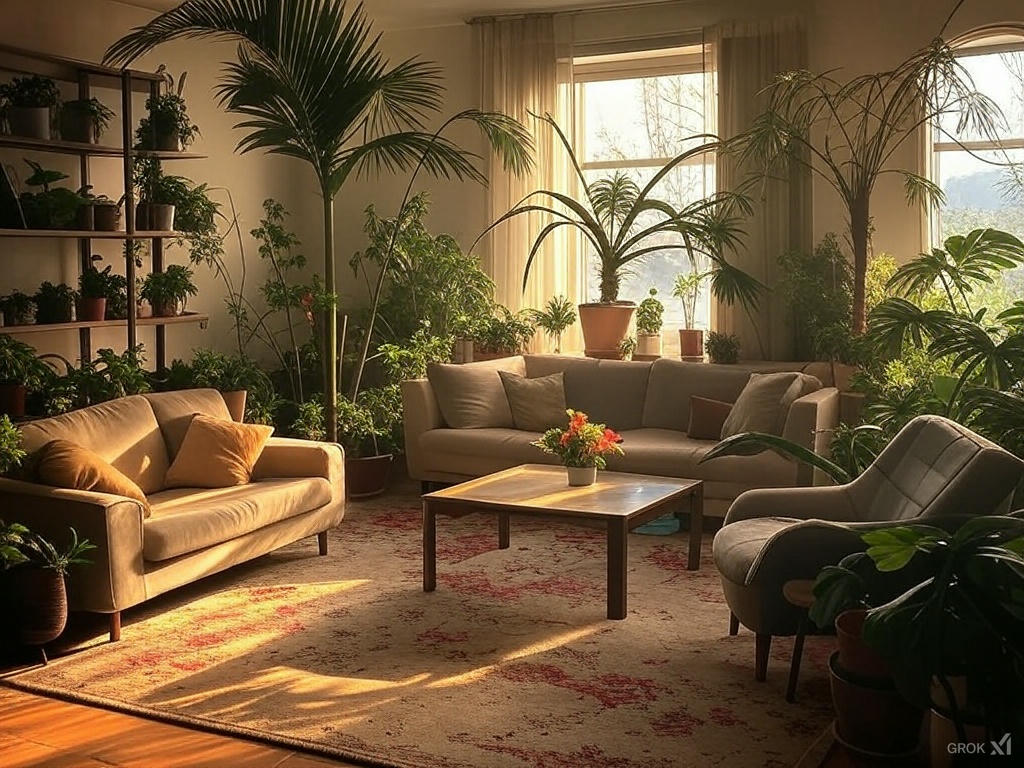
Mastering Indoor Gardening with Grow Lights
Share
Illuminating Growth: Mastering Indoor Gardening with Grow Lights
In the world of urban living and compact spaces, indoor gardening has blossomed from a niche hobby to a thriving lifestyle choice. Whether you're a plant enthusiast, a culinary explorer, or someone seeking a sustainable way to grow fresh produce, indoor grow lights have revolutionized how we cultivate plants within our homes. This comprehensive guide will shed light on everything you need to know about indoor grow lights, their benefits, and how to use them effectively.
The Rise of Indoor Gardening
Modern living spaces often come with limitations: limited natural sunlight, small balconies, or apartments without direct sun exposure. Indoor grow lights have emerged as a game-changing solution, allowing plant lovers and home gardeners to cultivate lush greenery and edible plants regardless of their environment's natural light conditions.
Why Grow Lights Matter
Traditional houseplants like monstera, pothos, and fiddle leaf figs have long been favorites for indoor spaces. However, the potential of indoor gardening extends far beyond decorative plants. With the right grow lights, you can now:
- Grow fresh herbs year-round
- Cultivate vegetables on your kitchen countertop
- Maintain tropical plants in regions with limited sunlight
- Create a sustainable mini-ecosystem inside your home
Understanding Grow Lights: The Basics
Grow lights are specialized light sources designed to stimulate plant growth by providing the specific spectrum of light that plants need for photosynthesis. Unlike standard household lighting, these lights are engineered to mimic natural sunlight, providing the essential wavelengths that drive plant growth.
Types of Grow Lights
-
LED Grow Lights
- Most energy-efficient option
- Low heat emission
- Customizable light spectrum
- Longest lifespan among grow light technologies
- Ideal for small spaces and delicate plants
-
Fluorescent Grow Lights
- Great for seedlings and low-light plants
- Lower initial cost
- Less energy-efficient than LEDs
- Good for herbs and leafy greens
-
High-Intensity Discharge (HID) Lights
- Powerful and intense light
- Best for larger growing areas
- Higher heat emission
- More suitable for serious indoor gardeners or greenhouse setups
Popular Plants for Indoor Grow Light Cultivation
Houseplants
- Monstera
- Pothos
- Spider Plants
- Peace Lilies
- Philodendron
Herbs
- Basil
- Mint
- Cilantro
- Parsley
- Chives
Vegetables and Edibles
- Lettuce
- Microgreens
- Cherry Tomatoes
- Peppers
- Spinach
Practical Applications: From Countertop to Vertical Gardens
Kitchen Herb Garden
Imagine having fresh basil, mint, and coriander just an arm's reach away while cooking. With a compact LED grow light setup, you can transform a small kitchen counter or windowsill into a thriving herb garden. These lights allow you to grow herbs consistently, ensuring a fresh supply of culinary ingredients regardless of season or outdoor conditions.
Micro-Vegetable Production
Urban dwellers with limited space can now produce their own fresh vegetables using grow lights. Microgreens and leafy vegetables like spinach and lettuce are particularly well-suited to indoor cultivation. A small, multi-tiered grow light system can produce enough greens to supplement your daily meals.
Tropical Plant Preservation
For plant enthusiasts living in regions with limited sunlight, grow lights offer a lifeline for tropical and light-sensitive plants. Monstera, with its iconic split leaves, can thrive under carefully calibrated grow lights, maintaining its vibrant green color and healthy growth.
Choosing the Right Grow Light: Key Considerations
-
Light Spectrum
- Blue light promotes vegetative growth
- Red light encourages flowering and fruiting
- Full-spectrum lights provide balanced growth conditions
-
Intensity and Coverage
- Measure the area you want to illuminate
- Consider the specific light requirements of your plants
- Look for adjustable intensity settings
-
Energy Efficiency
- LED lights consume less electricity
- Look for Energy Star certified options
- Consider long-term operational costs
-
Heat Management
- Ensure proper ventilation
- Choose lights with low heat emission
- Use adjustable height mechanisms to control plant exposure
Setting Up Your Indoor Garden
Step-by-Step Guide
- Assess your available space
- Choose plants suitable for indoor growth
- Select appropriate grow lights
- Install lights at correct distance from plants
- Set up a consistent light schedule
- Monitor plant health and adjust as needed
Environmental and Health Benefits
Indoor grow lights do more than just help plants grow. They contribute to:
- Improved indoor air quality
- Reduced carbon footprint
- Mental health benefits through gardening
- Access to fresh, pesticide-free produce
- Educational opportunities for children and adults
Common Challenges and Solutions
Potential Issues
- Overheating
- Incorrect light spectrum
- Uneven plant growth
- High electricity consumption
Mitigation Strategies
- Use adjustable, low-heat LED lights
- Implement timers for consistent light exposure
- Rotate plants periodically
- Choose energy-efficient models
Future of Indoor Gardening
The indoor gardening revolution is just beginning. Advances in LED technology, smart home integration, and sustainable design are making grow lights more accessible, efficient, and user-friendly. We can expect future innovations to include:
- AI-powered light optimization
- Integrated plant health monitoring
- More compact and aesthetically pleasing designs
- Greater energy efficiency
Conclusion: Illuminating Possibilities
Indoor grow lights have transformed the way we think about gardening. No longer constrained by outdoor conditions or limited space, anyone can become an indoor gardener. Whether you're looking to grow a few herbs, cultivate a tropical plant collection, or start a small vegetable garden, grow lights offer an exciting, accessible path to green living.
As technology continues to evolve, the barriers to entry for indoor gardening continue to lower. With some research, investment in quality equipment, and a bit of patience, you can create a thriving indoor garden that not only beautifies your space but also provides fresh, nutritious produce.
Ready to start your indoor gardening journey? The light is waiting.